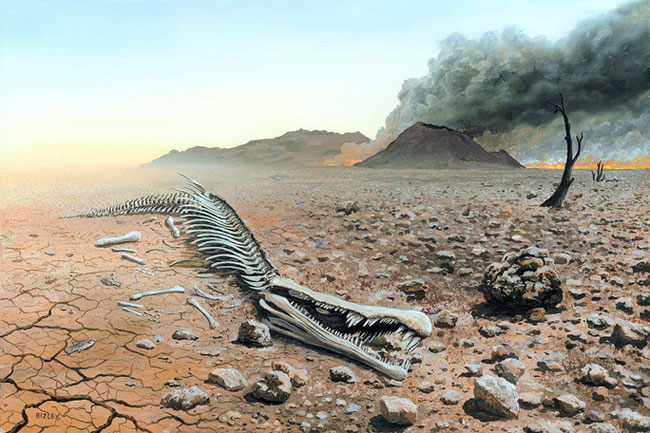Detecting a fairly recent 'doomsday', destroying 63% of animals
Examining hundreds of fossils, scientists have discovered a terrifying apocalypse that once sowed death across Africa and Arabia during the Early and Early Early Ages.
According to Science Alert, it is the most recent mass extinction to occur on Earth and has not been recorded before. It occurs during the transition of the global climate from swamp to icy.

An unknown "apocalypse" swept the Earth's "land of life" at the beginning of the Tan Tan, Ancient Near - (Photo: NEW SCIENTIST).
By collecting data from hundreds of fossils from five groups of mammals, a team of scientists led by Dr Dorien de Vries from the University of Salford (UK) has recorded the disappearance of 63% of animals worldwide. Africa and Arabia during that great extinction.
But unlike other mass extinctions that have occurred on the planet, many species have shown strong vitality by reappearing in the fossil record a long time later, rather than disappearing completely like species. dinosaur. That is, somehow, a small number of individuals still exist, greatly evolved to adapt and reproduce again.
"After a few million years, these groups began to reappear in the fossil record, but with a new look," Dr. Vries told Sci-News . Meanwhile, Dr. Steven Heritage from Stony Brook University and the Duke Lemur Center's Museum of Natural History (USA), co-author, said: "Clearly there was a major extinction event, then followed. It's a period of recovery."
This "doomsday" occurred about 30 million years ago, ie the beginning of the Oligocene (Tien Tan, Paleogene, or Ancient Near), but it seems to have been fragmented since the end of the Eocene (Thuy Tan) . It can be said that the "knot" Thuy Tan - Tien Tan brought catastrophic genocide, but made an evolutionary leap for Earth's creatures.
The study has just been published in the scientific journal Communication Biology.
- The Apocalypse stood still in 2013
- Apocalyptic clock is turned back 1 minute
- The truth about 2012 doomsday
- America stamped rumors about the end of the world
- How are people destroying themselves?
- Wild animals disturb schools
- Decode the plane 'Doomsday' of America
- Are animals raised by humans smarter than wild animals?
- The eternal clock for 'doomsday'
- 2012: Has Earth been destroyed?
- Detecting animals without oxygen
- Apocalyptic Clock inched up by a minute
 10 famous Isaac Newton inventions
10 famous Isaac Newton inventions 'Doomsday 2021' and Mayan conspiracy theories
'Doomsday 2021' and Mayan conspiracy theories 7 perspective of the destruction of the Earth
7 perspective of the destruction of the Earth Isaac Newton predicted the world would end in 2060
Isaac Newton predicted the world would end in 2060